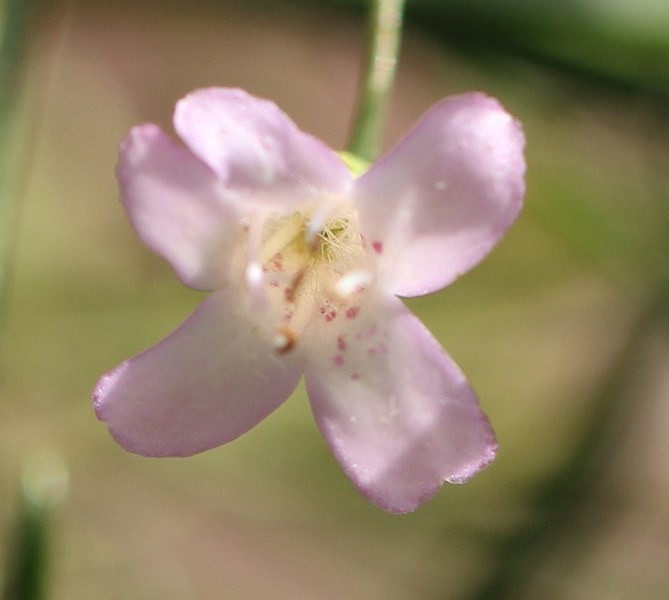Poverty Bush
(Eremophila alternifolia)

Description
Eremophila alternifolia, commonly known as narrow-leaved poverty bush, (synonyms: Bondtia alternifolia) is a plant in the figwort family, Scrophulariaceae, and is endemic to areas between the far west of New South Wales, the far south of the Northern Territory and the southern half of Western Australia. It is a variable shrub, with respect to its growth form, leaf shape and flower colour. Aboriginal Australians used the leaves to treat ailments such as colds and skin infections and pharmacological testing has shown that the leaves contain compounds that affect cardiacactivity. Eremophila alternifolia is a shrub with many branches and varying in height but mostly 1–4 m (3–10 ft). The branches have many raised resin glands and raised leaf scars. The leaves are arranged alternately and are usually 20–40 mm (0.8–2 in) long, 1–3 mm (0.04–0.1 in) wide although other dimensions are common. The leaves vary in shape from almost cylinder-shaped to flattened and egg-shaped but have a small point on the end. The flowers are purple, red, pink, white, cream, or yellow and appear on the plant from early winter to early autumn. The flowers are arranged singly in leaf axils on an s-shaped stalk which is usually 20–40 mm (0.8–2 in) long. There are 5 greenish-yellow or reddish, egg-shaped sepals, mostly 7–10 mm (0.3–0.4 in) long with the outer ones slightly smaller. The 5 petals are 18–30 mm (0.7–1 in) long and joined at their base to form a tube with the upper 4 lobes pointed and the lower one spreading. Flowering occurs from June to October and is followed by fruit which are cone-shaped, dry, woody, glabrous and 5–7 mm (0.2–0.3 in) long. Eremophila alternifolia occurs in arid areas of Western Australia, South Australia, Northern Territory and the Barrier Range in New South Wales, in many different habitats with stony or red soil. In Western Australia this poverty bush is widespread and is classified as "not threatened" by the Government of Western Australia Department of Parks and Wildlife.
Taxonomic tree:







